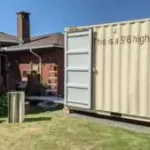Most homeowners overlook the significant impact that high-quality insulation can have on your energy bills and comfort levels. By upgrading to energy-efficient insulation products, you can enhance your home’s thermal performance, reduce heating and cooling costs, and create a more sustainable living environment. In this guide, we’ll explore the top 10 insulation products that should be on your home improvement list, helping you make informed choices that benefit both your home and the planet.
Key Takeaways:
- Consider using fiberglass insulation for its effective thermal performance and affordability, making it a popular choice for homeowners.
- Look into spray foam insulation for areas that require an air-tight seal, as it expands to fill gaps and can significantly improve energy efficiency.
- Reflective or radiant barrier insulation can be beneficial in warmer climates, as it helps reduce cooling costs by reflecting radiant heat away from living spaces.
Fiberglass Insulation
While fiberglass insulation remains one of the most popular choices for homeowners, it’s vital to understand its efficiency and variety. Known for its effectiveness in minimizing heat transfer, this type of insulation helps keep your home comfortable year-round. With advancements in technology, fiberglass products have become highly efficient, making them a solid choice for your home improvement list.
Standard Fiberglass Batts
Fiberglass batts are pre-cut panels that are easy to install between wall studs and ceiling joists. Available in various thicknesses, these batts are designed to fit standard framing sizes, making them an accessible option for DIY projects. They provide excellent thermal performance and soundproofing, helping to create a quieter, more energy-efficient home.
Blown-in Fiberglass
For those looking to insulate hard-to-reach areas or fill existing wall cavities, blown-in fiberglass may be the perfect solution. This insulation is installed using special equipment that blows cellulose, enabling the material to settle even in tight spaces, providing a seamless barrier against air leaks.
Fiberglass blown-in insulation offers the added benefit of thorough coverage, reducing the potential for gaps and cold spots. This method is particularly effective for attics and crawl spaces, where traditional batts may be less practical. When you choose blown-in fiberglass, you’re investing in enhanced energy efficiency that can lower your heating and cooling costs, ensuring your home remains comfortable all year round.
Spray Foam Insulation
Some of the most effective energy-efficient insulation products on the market today are spray foam insulation options. This versatile material expands upon application, filling gaps and cracks to create an airtight seal that boosts your home’s overall energy efficiency. It is especially beneficial in hard-to-reach areas and is an excellent choice for both new constructions and renovations.
Open-Cell Spray Foam
On the other hand, open-cell spray foam is a lightweight option that provides excellent sound insulation and thermal performance. It is ideal for indoor applications as it allows for air and moisture flow, preventing mold issues while still reducing energy loss. You can use it in walls, ceilings, and attics to create a cozy environment.
Closed-Cell Spray Foam
Some homeowners prefer closed-cell spray foam due to its higher density and rigidity. This insulation type offers superior thermal resistance and a moisture barrier, making it an exceptional choice for areas prone to water exposure, like basements and crawl spaces. You can benefit from its strength, which adds structural integrity to your home.
Spray foam insulation not only helps keep your energy costs low but also provides long-lasting durability. With closed-cell spray foam, you enjoy a higher R-value per inch compared to other types, ensuring you maintain optimal indoor temperatures. Plus, its resistance to water and air infiltration enhances your home’s durability against the elements. When choosing insulation, investing in closed-cell spray foam can result in significant long-term savings on energy bills and increased comfort in your living spaces.
Natural Insulation Materials
Keep in mind that natural insulation materials are not only environmentally friendly but also provide excellent thermal performance. Opting for these materials can enhance your home’s energy efficiency while contributing to sustainability. Options like cellulose and cotton insulation can be effective in minimizing energy loss, making them worthy candidates for your home improvement list.
Cellulose Insulation
Any homeowner looking for eco-friendly options should consider cellulose insulation, made primarily from recycled paper products. It is treated with fire retardants and applied as loose fill or dense-packed in walls and attics, providing superior thermal performance and soundproofing. Moreover, cellulose insulation is a sustainable choice that can significantly reduce your ecological footprint.
Cotton Insulation
An excellent alternative to traditional insulation is cotton insulation, derived from post-industrial cotton waste. This non-toxic material not only performs well in terms of R-value but is also treated with a fire retardant for safety. It is available in batts, rolls, or loose-fill, allowing you to choose the best application for your home.
Natural cotton insulation is highly effective in regulating temperature and humidity, making your living space more comfortable throughout the year. Additionally, its sound-absorbing properties enhance your home’s acoustics, reducing outside noise. Cotton insulation is also free from harmful chemicals, making it a safe choice for you and your family. By selecting cotton insulation, you contribute to a greener future while improving your home’s energy efficiency.
Mineral Wool Insulation
Not only does mineral wool insulation offer excellent thermal performance, but it also provides fire resistance and soundproofing benefits, making it a smart choice for your home improvement projects. This type of insulation is made from natural or recycled materials, such as basalt rock and slag, ensuring sustainability while helping you save on energy costs. With its versatility, you can use mineral wool in various applications, including walls, attics, and floors.
Rock Wool Batts
If you are looking for easy-to-install insulation, rock wool batts are an excellent option. These pre-cut, rigid insulation panels can fit snugly between wall studs, making the process quick and efficient. Their sound-dampening qualities and resistance to moisture not only help maintain your home’s comfort but also contribute to its energy efficiency.
Slag Wool Panels
Some homeowners may overlook slag wool panels as an insulation option, but they offer unique benefits. Made primarily from recycled steel slag, these panels are not only environmentally friendly but are also dense and effective for sound insulation and thermal control.
Rock wool insulation panels, including slag wool options, excel in thermal efficiency and acoustic performance. Their dense structure helps to minimize heat transfer and noise, allowing you to maintain a comfortable living environment. Additionally, they are resistant to fire and do not support mold growth, making them a safe and durable choice for your home improvement needs.
Foam Board Insulation
Despite being less commonly discussed, foam board insulation is an excellent option for enhancing your home’s energy efficiency. These rigid panels, made from polystyrene or polyisocyanurate, provide a high R-value per inch of thickness, making them an effective barrier against heat loss. Their versatility allows them to be used in various applications, including exterior walls, basements, and even under roofs, providing you with a robust solution that keeps your home comfortable and energy costs low.
Polyisocyanurate Boards
On the market, polyisocyanurate boards stand out due to their impressive thermal resistance. They feature a core of foam insulation sandwiched between durable facers, resulting in exceptional R-values and moisture resistance, which makes them suitable for both commercial and residential applications.
Extruded Polystyrene Panels
There’s a reason extruded polystyrene panels are a favorite among builders—they offer a combination of strength and insulation that is hard to beat. These rigid panels are lightweight yet strong, making them easy to handle during installation. They also provide a moisture barrier, which is especially beneficial in areas prone to dampness, such as basements or around foundations.
The closed-cell structure of extruded polystyrene panels not only enhances their insulating properties but also minimizes water absorption, ensuring your insulation remains effective over time. This durability, coupled with their excellent thermal performance, means you can confidently invest in extruded polystyrene for your insulation projects. Whether you’re looking to insulate your walls or create a flat roof, these panels will provide the energy efficiency and longevity you desire in your home improvement efforts.
Reflective Insulation
To enhance your home’s energy efficiency, consider incorporating reflective insulation in your improvement plans. This type of insulation works by reflecting radiant heat away from living spaces, keeping your home cooler in summer and reducing heating costs in winter. Typically made of materials like aluminum foil, reflective insulation is easy to install and can be added to attics or walls to improve your overall energy savings.
Radiant Barrier Foil
Even a simple addition of radiant barrier foil can significantly reduce heat transfer in your home. This reflective material is installed in attics and acts as a shield against unwanted solar heat. By reflecting sunlight away from your living spaces, you can enjoy a more comfortable indoor climate and lower energy bills, especially during hot months.
Bubble Wrap Insulation
Any home improvement project can benefit from bubble wrap insulation, providing a unique method of thermal insulation. It consists of layers of plastic bubbles, which trap air and reduce heat transfer. This lightweight material can easily be cut to size and applied in various places, such as around windows and doors, to minimize drafts.
The versatility of bubble wrap insulation makes it an excellent choice for DIY enthusiasts or temporary projects. Not only does it act as an insulator, but it can also help with soundproofing and moisture barrier needs. When applied correctly, you can enjoy a more comfortable home while also improving its energy efficiency. Consider using bubble wrap insulation in areas that require additional protection against temperature fluctuations or noise, and realize the benefits without breaking the bank.
Structural Insulated Panels
Many homeowners are turning to Structural Insulated Panels (SIPs) as an effective way to enhance the energy efficiency of their homes. These panels consist of an insulating foam core sandwiched between two structural facings, providing superior thermal performance compared to traditional framing methods. Installing SIPs can greatly reduce air leakage, lower energy bills, and create a more comfortable living environment. With their ease of installation and sustainability, SIPs are becoming a favored choice for new builds and retrofitting projects alike.
EPS Core Panels
Even as a versatile option, EPS core panels offer an excellent balance of affordability and insulation performance. Made from expanded polystyrene, these panels are lightweight and easy to handle, while still providing effective thermal insulation. This makes EPS panels an attractive choice for various construction applications, including walls, roofs, and floors.
XPS Core Panels
You may want to consider XPS core panels for projects requiring higher moisture resistance and durability. Extruded polystyrene (XPS) panels are known for their superior compressive strength, making them ideal for below-grade applications and areas exposed to harsh weather conditions.
Core insulation of XPS panels typically features a closed-cell structure, which minimizes moisture absorption and enhances thermal efficiency. This makes them an excellent choice for foundation insulation and exterior walls, ensuring your home remains energy-efficient while protecting against mold and water damage. With multiple thickness options available, XPS panels can easily accommodate your specific insulation needs.
Polyurethane Foam
Once again, polyurethane foam stands out as a versatile insulation choice for homeowners seeking energy efficiency. This lightweight material is known for its excellent thermal properties, making it a popular option for both walls and roofs. Its ability to create an airtight seal helps reduce energy loss, ultimately lowering your heating and cooling costs.
Rigid Polyurethane Boards
Polyurethane boards offer a high insulation value per inch, making them ideal for various applications. These rigid boards are easy to install and can be used in walls, roofs, and even foundation systems. When you incorporate rigid polyurethane boards into your home improvement projects, you enhance energy efficiency while maintaining structural integrity.
Pour-in-Place Foam
The pour-in-place foam insulation method allows for seamless application in irregularly shaped spaces, providing an excellent barrier against air infiltration. Its adaptability makes it suitable for both new construction and retrofitting projects.
PourinPlace foam is injected into designated areas, and it expands to fill every nook and cranny, ensuring a tight seal. This method offers high R-values, effective moisture resistance, and soundproofing qualities. By choosing pour-in-place foam, you are investing in a long-lasting, energy-efficient solution that can significantly improve your home’s comfort and energy performance.
1. Choose fiberglass batts for cost-effective insulation solutions.
2. Spray foam offers superior air sealing and insulation.
3. Rigid foam boards provide high thermal resistance options.
4. Cellulose insulation is eco-friendly and energy-efficient.
5. Reflective or radiant barriers reduce heat gain in attics.
6. Evaluate insulation R-value for optimal energy performance.
To wrap up
Now that you know which energy-efficient insulation products should be on your home improvement list, it’s time to consider your options. Evaluating your needs and assessing your home’s specific requirements will guide you in selecting the best materials, such as cellulose, fiberglass, or spray foam. For more detailed information, you can explore the many types of insulation available to ensure optimal energy savings in your home. Visit Types of Insulation to make informed choices that benefit both your comfort and your wallet.
FAQ
Q: What are the most popular energy-efficient insulation products for home improvement?
A: Among the most sought-after energy-efficient insulation products are spray foam insulation, fiberglass batts, and cellulose insulation. Spray foam offers excellent air sealing properties and high R-values, making it ideal for difficult-to-reach areas. Fiberglass batts are affordable and widely available, perfect for attics and walls. Cellulose insulation, made from recycled paper, is environmentally friendly and provides effective thermal resistance, fitting snugly into wall cavities and attic spaces.
Q: How do I choose the right type of insulation for my home?
A: Choosing the right type of insulation depends on several factors, including your local climate, the area of your home that needs insulation, and your budget. If you live in a colder climate, look for high-R-value options like spray foam. For attic spaces or walls, fiberglass batts may be sufficient and cost-effective. Additionally, consider factors like moisture resistance and the ease of installation when making your decision. Consulting with a professional can provide guidance tailored to your specific needs.
Q: What are the long-term benefits of investing in energy-efficient insulation?
A: Investing in energy-efficient insulation can lead to substantial long-term benefits. Homeowners often experience reduced energy bills due to improved thermal performance, as buildings maintain desired temperatures more effectively. Additionally, proper insulation can enhance indoor comfort, create a quieter living environment, and potentially increase property value. Furthermore, with a growing emphasis on sustainability, energy-efficient insulation contributes to reducing overall carbon footprints, aligning with environmentally conscious practices.





